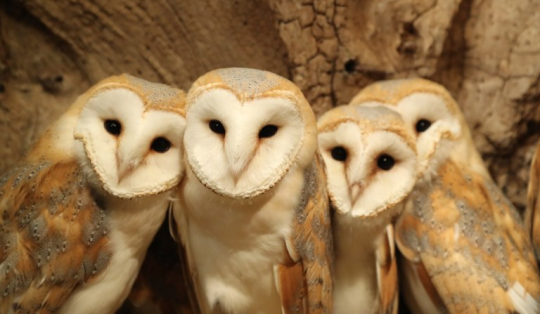
WHOOOOO? IT’S OWLS – PART II
We hope you enjoyed the first half of the owl story; the head. This Treasure Hunt discusses all the rest; what goes on below the owl’s head.
Flying … Stealth is the Name of the Game
Large, soft wings give most owls the ability to fly slowly and silently. Several factors enable this advantage. Not only do owls have larger wings in comparison
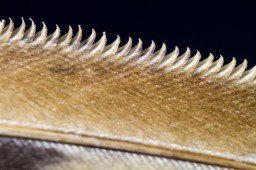
to both their body mass and that of most other birds, but the wing feather is completely different from those of other birds. Instead of the usual sharp edges,
owl wing feathers are “comb-like” and break down the turbulence that normally creates the “swooshing” sound of a bird in flight. Instead the sound is muffled and the owl flies silently, enabling it to listen for tiny sounds from the movement of prey. Take a look at this short video, which is labeled “4. Owl Flight is Silent”. It shows how all the wing features of an owl combine to insure that it will arrive at its prey without a sound.
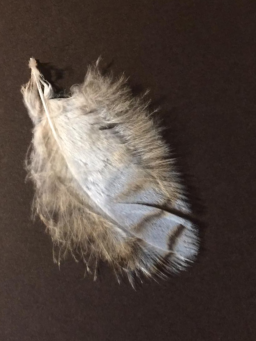
Just so you know … owls don’t get to eat when its raining. Their soft and effective feathers are not waterproof and they can’t fly when the feathers are wet.
Hunting Strategy … Time for Talons and Beak
Owls generally have a hunting territory away from their daytime roost.
As soon as a target is located, the owl will fly towards it, keeping its head in line with the target until the last moment. This is when the owl pulls its head back, and thrusts its feet forward with its talons spread. However, owls have an unusual adaptation that involves their feet. Like other raptors, owls typically have three talons pointing forward and one pointing backward. But owls can rotate one of their forward-pointing toes to the back, making their toe arrangement more like that of a woodpecker, and becomes, yet another body part that is able to swivel! The advantage of this talon talent is evident when the owl grasps its food. If a rabbit or mouse is struggling to get away, it’s very helpful to have an equal number of talons on each side to ensure the prey won’t free itself. Exhibiting truly exceptional grip, owls also have the ability to lock their toes around an object so that they don’t need to continually contract their muscles. This gives them maximum grip with minimal effort!
The force of the impact of the talons is usually enough to stun the prey, which is then dispatched with a snap of the beak. Once caught, smaller prey is taken away in the beak, or eaten immediately. Larger prey is carried off in the talons.
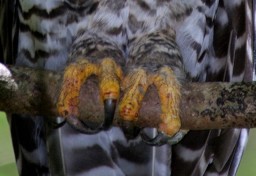
Food … Finally We Get to Eat!
Owls are carnivores, but their main food largely depends on the species of owl. For example, in the case of More Mesa’s owls, the Great Horned Owl eats larger mammals like rabbits, squirrels, raccoons, big birds and skunks! (It’s OK … owls can’t smell!) Long-eared, Short-eared and Barn Owls eat smaller mammals, like voles, mice and rats. The smallest owls, Western Screech and Burrowing eat insects, small birds and sometimes small mammals. Here comes the test to see if you were paying attention in Part I of owls! All our owls have yellow eyes except the Barn Owl that has black eyes. Who hunts when?
Digestion … It’s Not That Easy
Like other birds, owls cannot chew their food – small prey items are swallowed whole, while larger prey are torn into smaller pieces before being swallowed. For example, Barn Owls swallow their prey whole, skin, bones, and all … and they eat up to 1,000 mice each year.
Rather than being stored for later, the owl’s dinner is passed directly to the digestive system. Owl stomachs have two parts, one that does the chemistry necessary for digestion and the other (the gizzard) is what holds, and eventually compresses the trash (fur, teeth, bones, feathers etc.) The digestible part is allowed to pass through the system with useful components being absorbed into the body and the waste of food digestion being excreted at the end of the digestive tract … the “white stuff” that birds leave everywhere.
Several hours after eating, indigestible parts (trash that is still in the gizzard) are compressed into a pellet that ends up, after several meals, being the same shape as the gizzard. (Think of the gizzard as a trash compactor and you get the idea.) The pellet then travels
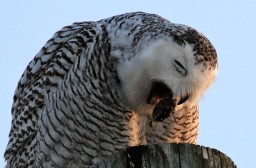
back up from the gizzard to the “chemistry section” and remains there for up to 10 hours before being regurgitated. Because the stored pellet partially blocks the owl’s digestive system, new prey cannot be swallowed until the pellet is ejected. Regurgitation looks really painful, but at least the owl can eat again.
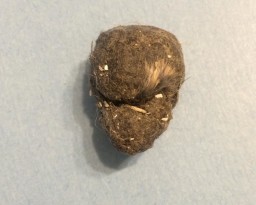
The Cycle of Life
Most owls reach sexual maturity and are ready to reproduce in about a year. The decision to reproduce is not always at a specific time of year, but often based on available food supplies. Also, various species begin courtship at surprising times of the year. For example, the Great Horned Owl begins in December; even in very cold places! As might be expected, and after we have explored their lifeway in such depth, courtship among owls is mostly about sound. Depending on the species, various specialized hooting is used for attracting mates, as well as nodding and bowing and appropriately enough … billing and cooing.
Although variations exist for different species, owls are usually monogamous, or pair with the same mate for several seasons. They don’t construct nests as such, instead they are opportunistic nesters, using ready-made sites or taking over the abandoned nests of other birds. They also use holes in trees, barns or other buildings. And when you provide these birds with an owl box, they think they have died and gone to heaven! However, Burrowing Owls nest underground; appropriately enough, in abandoned burrows.

Depending on the species, the nest will mostly house a few eggs. During incubation, eggs are rarely left alone. The female, who is always larger than the male, will incubate the eggs. She develops a brood patch, which is a sparsely feathered part on the belly, with a higher density of blood vessels than other parts of the skin. This allows eggs to receive warmth directly from her through this area, and they will hatch in about 30 days. Owl chicks, similar to the Western Gull chicks we talked about in a previous Treasure Hunt, hatch with the aid of an “egg tooth.”
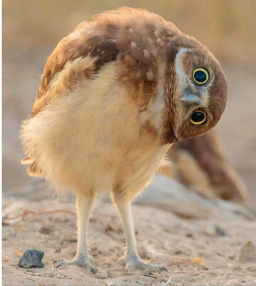
Dad delivers food to the nest up to 10 times a day. Prey is ripped apart by the adults until such time that the chicks can swallow it whole. At that time the chicks also begin producing pellets. They fledge anywhere from 4 to 10 weeks, depending on the species. Parents care for the fledglings an additional few weeks to few months, and then the circle is complete again.
Mythology
Throughout history and across many cultures, people have regarded owls with both fascination and awe. In ancient times owls represented wisdom and helpfulness. However, by the Middle Ages in Europe, the owl became an associate of witches and the inhabitant of dark, lonely and evil places. In the eighteenth century, science eliminated some of the mystery about owls, and now with superstitions dying out in many parts of the world, the owl has returned to its position as a symbol of wisdom.
Finally, and you knew this was coming, we have to talk about the major role played by owls in the Harry Potter tales. Since Harry’s world does not have a federal postal service, owls carry all the mail … messy … but they get the job done! And, in addition to mail service, Harry’s owl Hedwig, provides warm companionship whenever he is blue and lonely. (FYI: Hedwig is a Snowy Owl and native to Arctic like regions!)
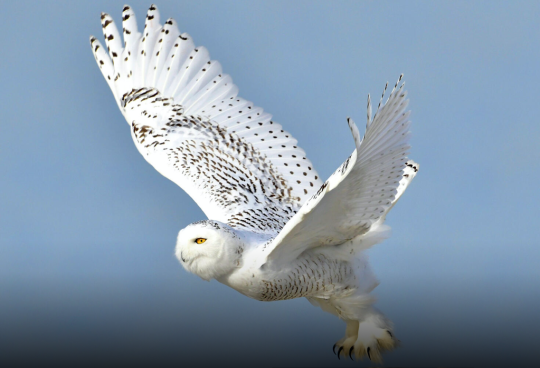
We are indebted to owlpages.com for providing its very professional and accurate information on owls, as well as several of our most interesting photos.
Remember: Six Feet Apart and Stay Safe,
Valerie
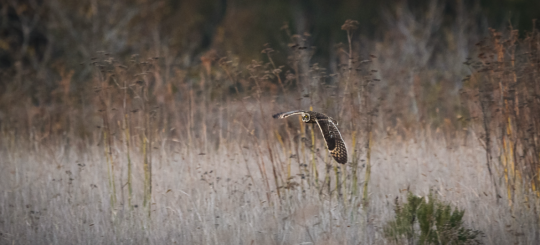 WHOOOOO? … IT’S OWLS
WHOOOOO? … IT’S OWLS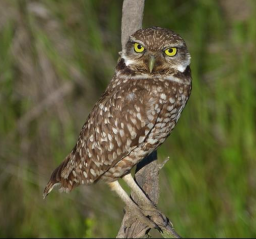
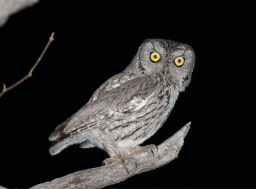
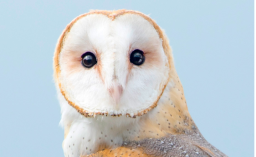
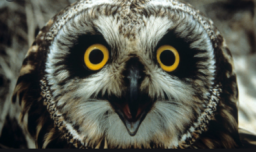
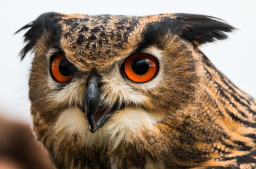
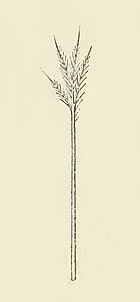
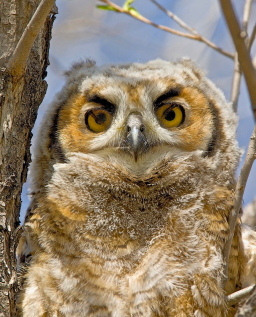
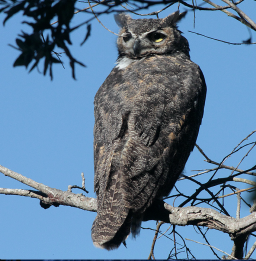
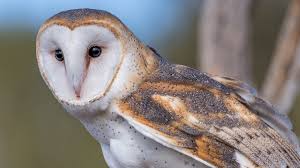
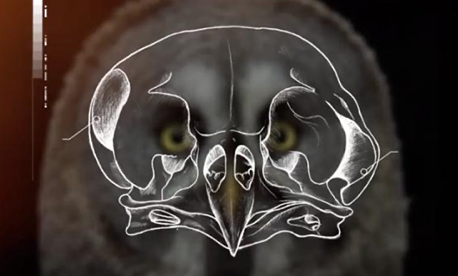 such that owls can detect a left/right time difference of about 30 millionths of a second! To see owl hearing in action, check out
such that owls can detect a left/right time difference of about 30 millionths of a second! To see owl hearing in action, check out